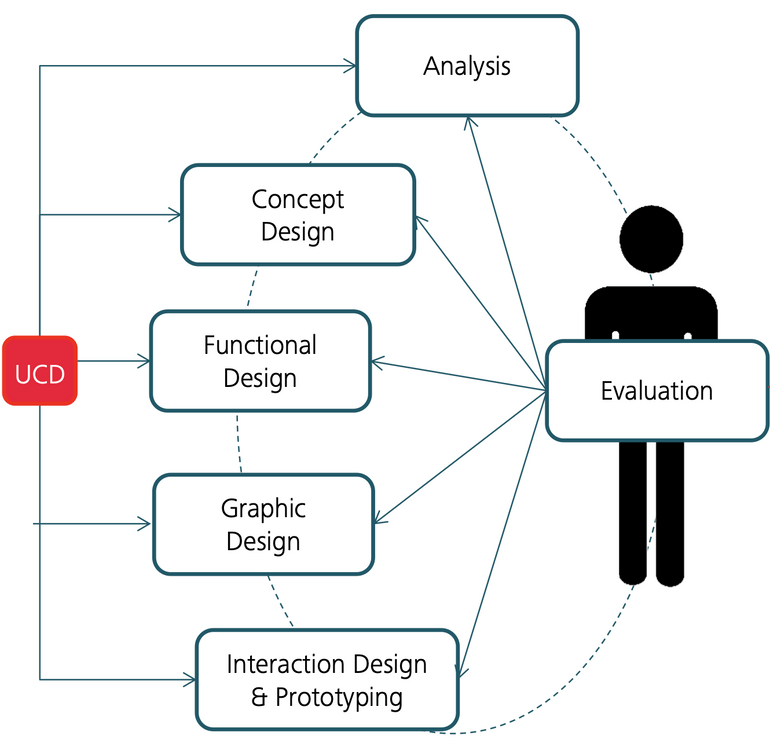
User Centered Design
UCD Definition
- User-centered design (UCD) is an iterative design method where designers focus their attention to users' needs and requirements at every stage of the process [4].
- To create products that are useable and accessible for users, UCD design teams incorporate clients into every stage of the design process using a multitude of research and design methodologies [4].
- In the case of developing AI transparency for autonomous driving, it is important to include users in every step of the development, as the designs are targeted at them.
Four Steps of UCD
UCD is an iterative process with four distinct steps [5] that is repeated as often as needed. Should you see that changes are in order, just go back to a previous step and repeat it with your knewly gained knowledge.
- Context of use: Determine who will use the product, what they will use it for, and the circumstances in which they will use it.
- Requirements: Identify any business needs or user objectives that must be satisfied for the product to succeed.
- Design solutions: This step of the process can be carried out in stages, progressing from a basic idea to a finished design.
- Design evaluation: Evaluation is an essential part of successful development, ideally through usability testing with real users.
Quick Deep Dive
Rob Kling first used the phrase "User-Centered Design" in 1977 [1]. The concept gained popularity once Donald A. Norman's book was published in 1986: User-Centered System Design: New Viewpoints on Human-Computer Interaction. The Design of Everyday Things [3], a substantial work by Norman, helped the idea receive more recognition and acceptance.
Software designers can design a good product for their users with the use of the UCD approach. User requirements are taken into account from the very beginning and are part of the entire product lifecycle. Through investigative techniques such as ethnographic study, contextual inquiry, prototype testing, usability testing, and other ways, these criteria are documented and refined.

Involving the user in every step of the design process - own representation.
Sources
[1] - Kling, Rob. "The organizational context of user-centered software designs." MIS quarterly (1977): 41-52.
[2] - Norman, Donald A., and Stephen W. Draper. "User centered system design: New perspectives on human-computer interaction." (1986).
[3] - Norman, Don. The design of everyday things: Revised and expanded edition. Basic books, 2013.
[4] - Interaction Design Foundation. “User Centered Design” https://www.interaction-design.org/literature/topics/user-centered-design [Accessed September 2022].
[5] - US Department of Health and Human Services. "User-centered design basics." (2020).